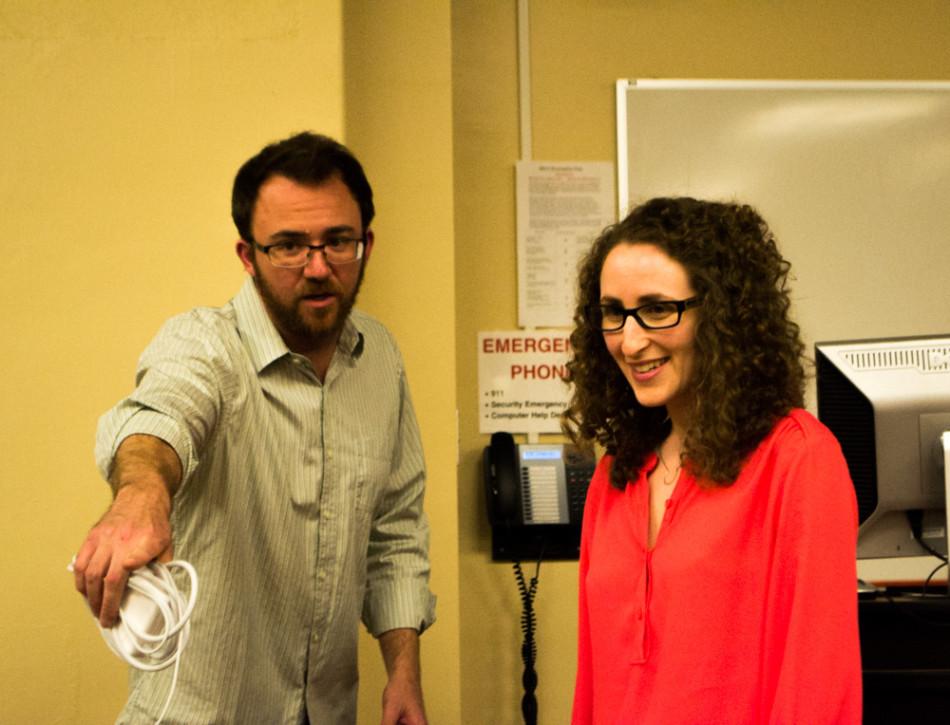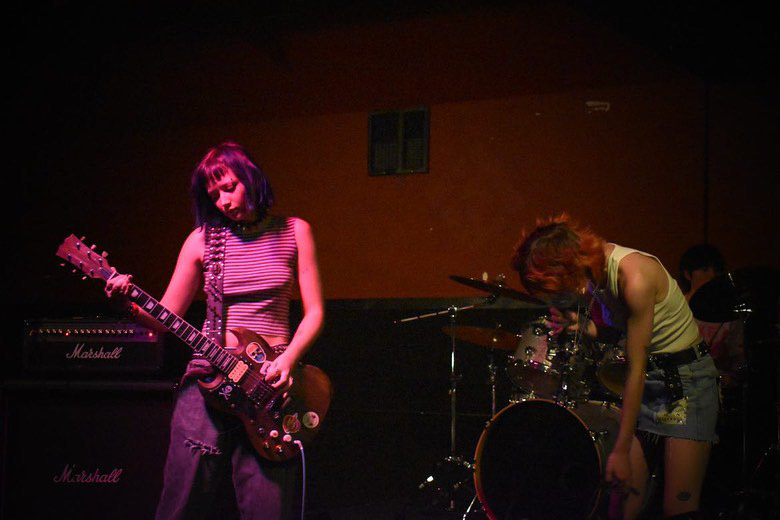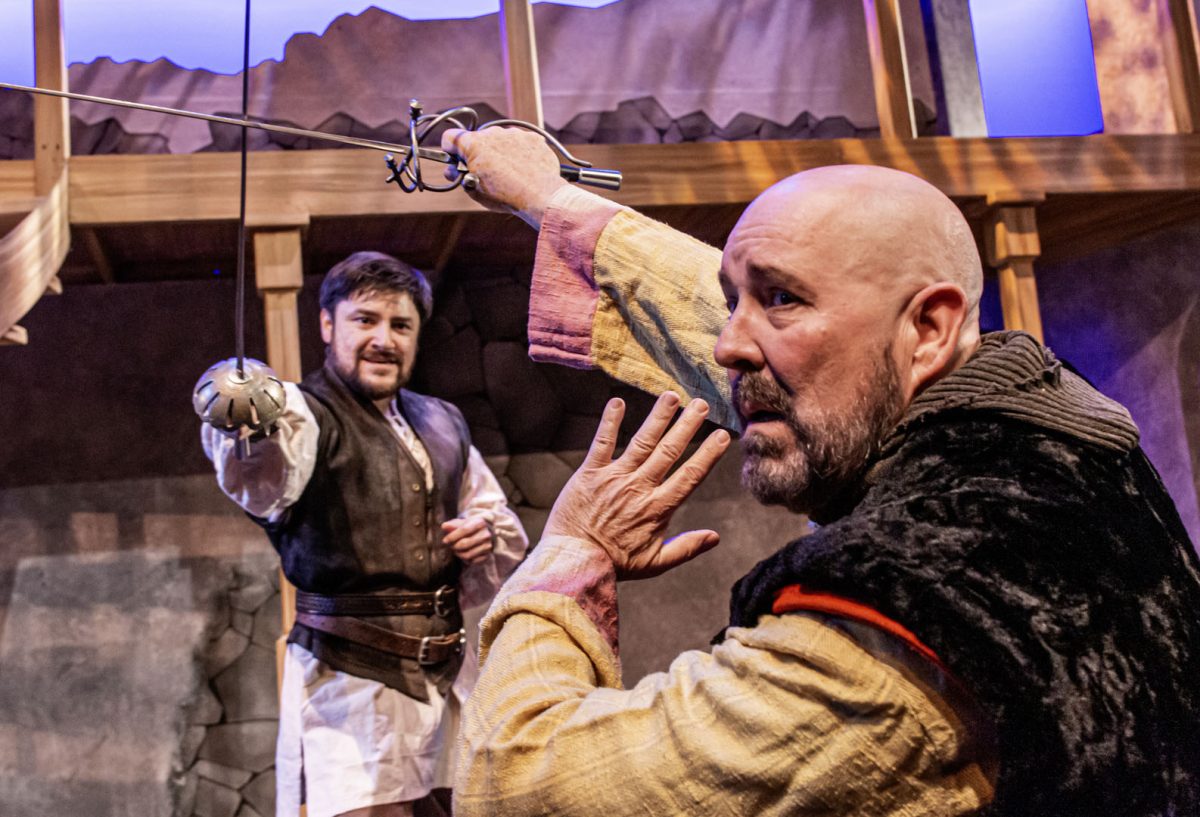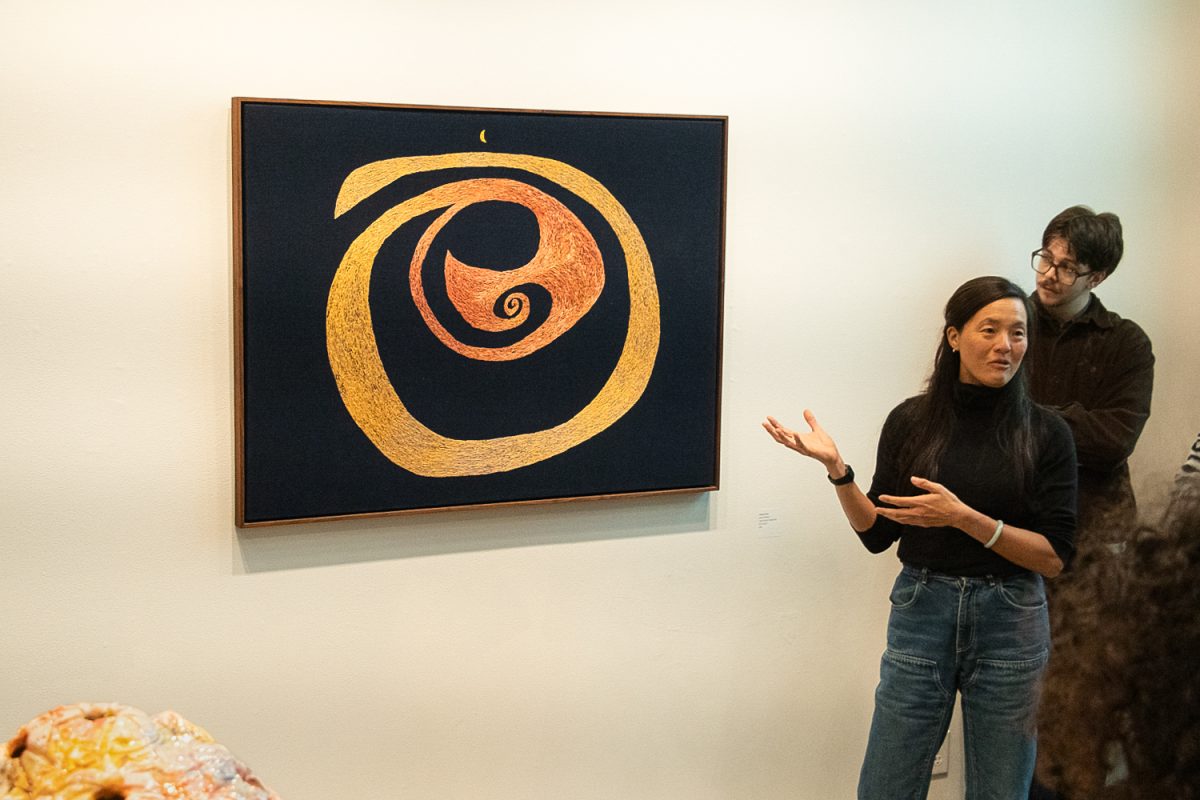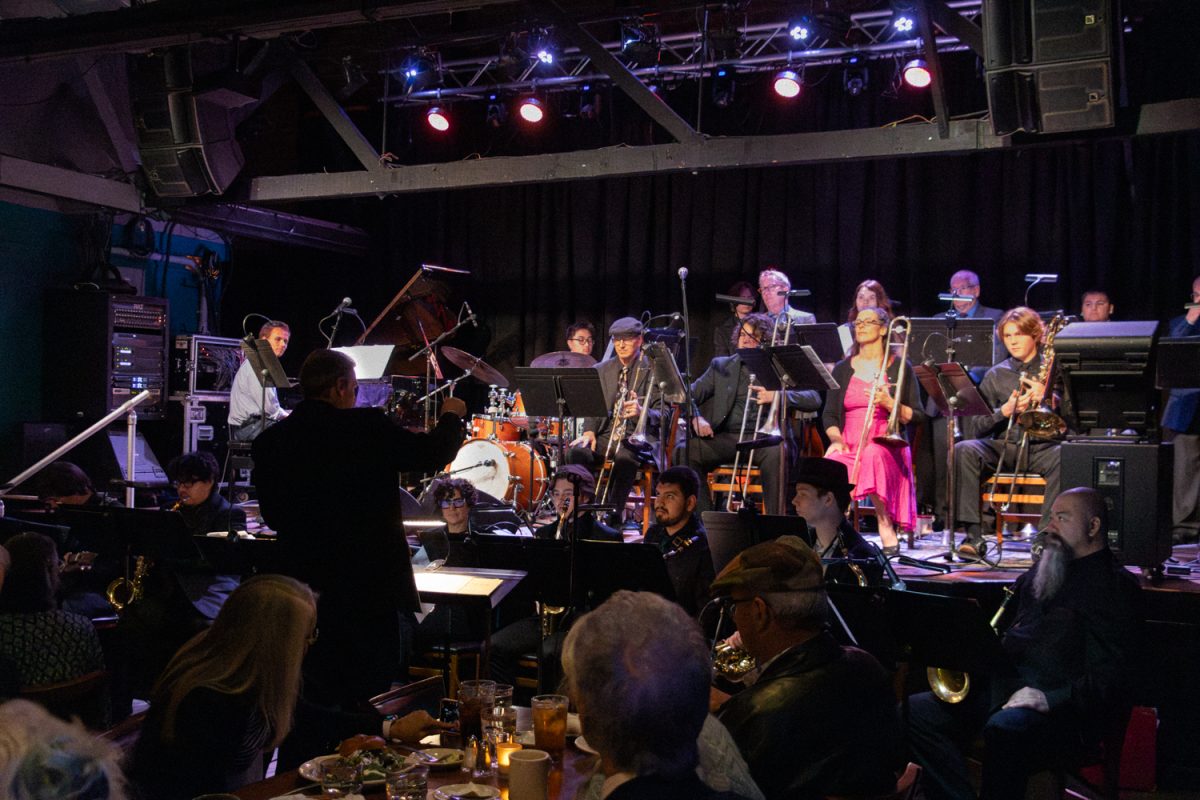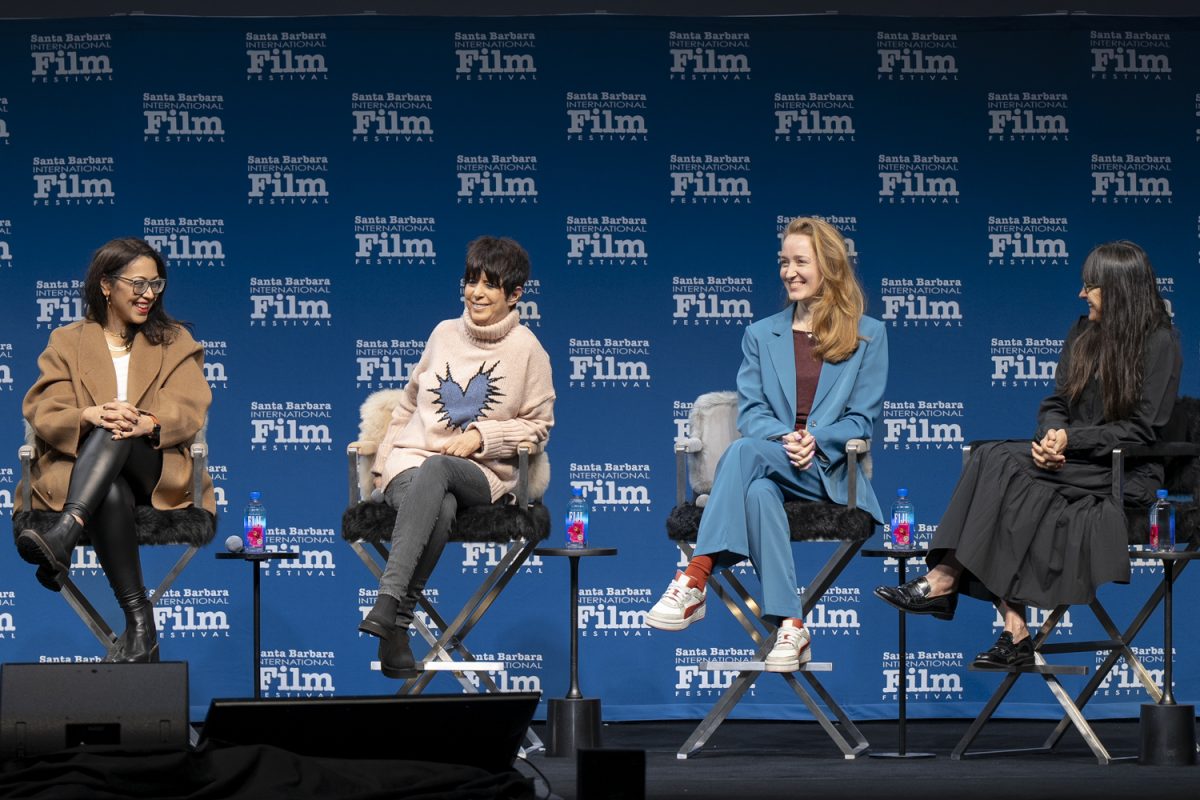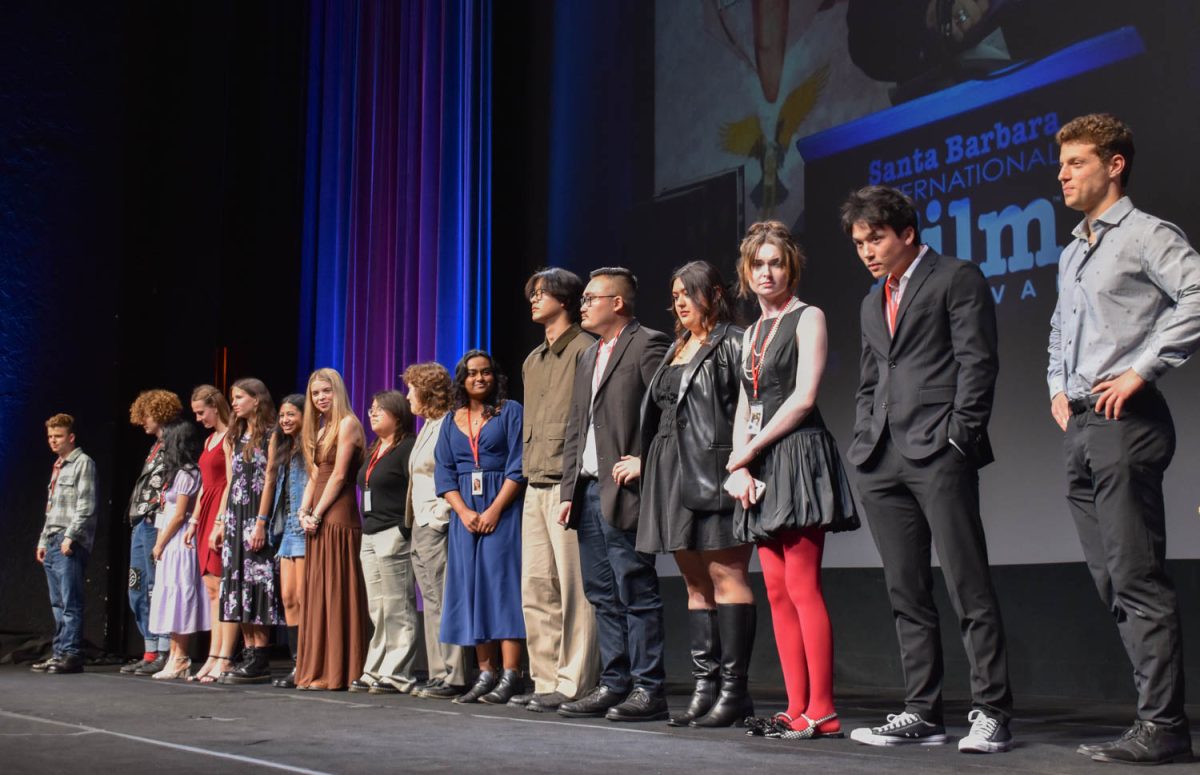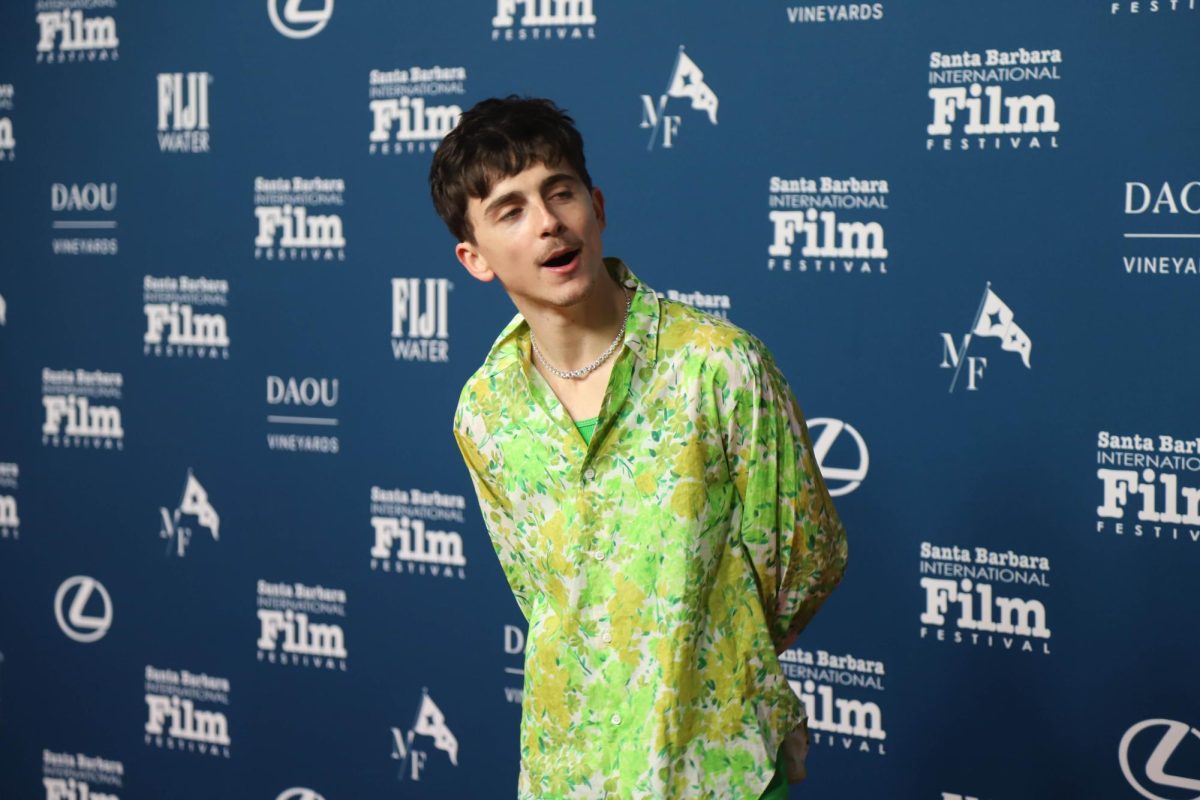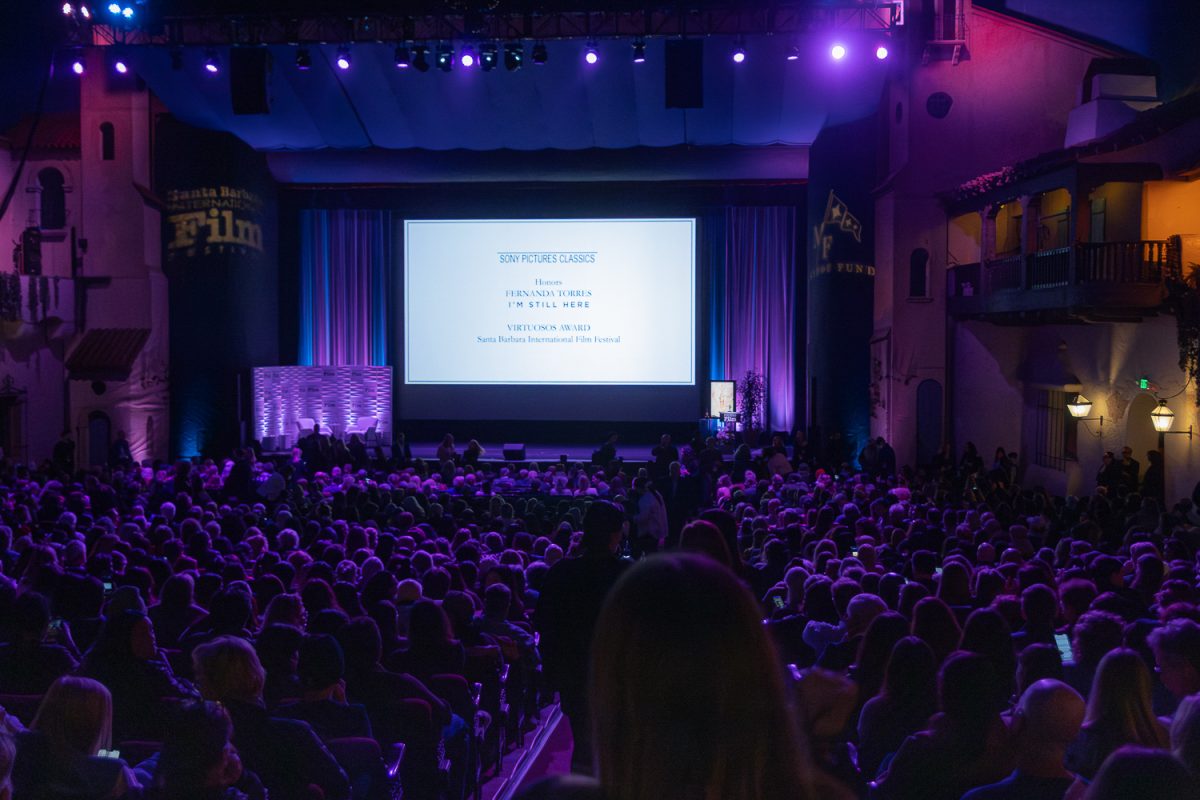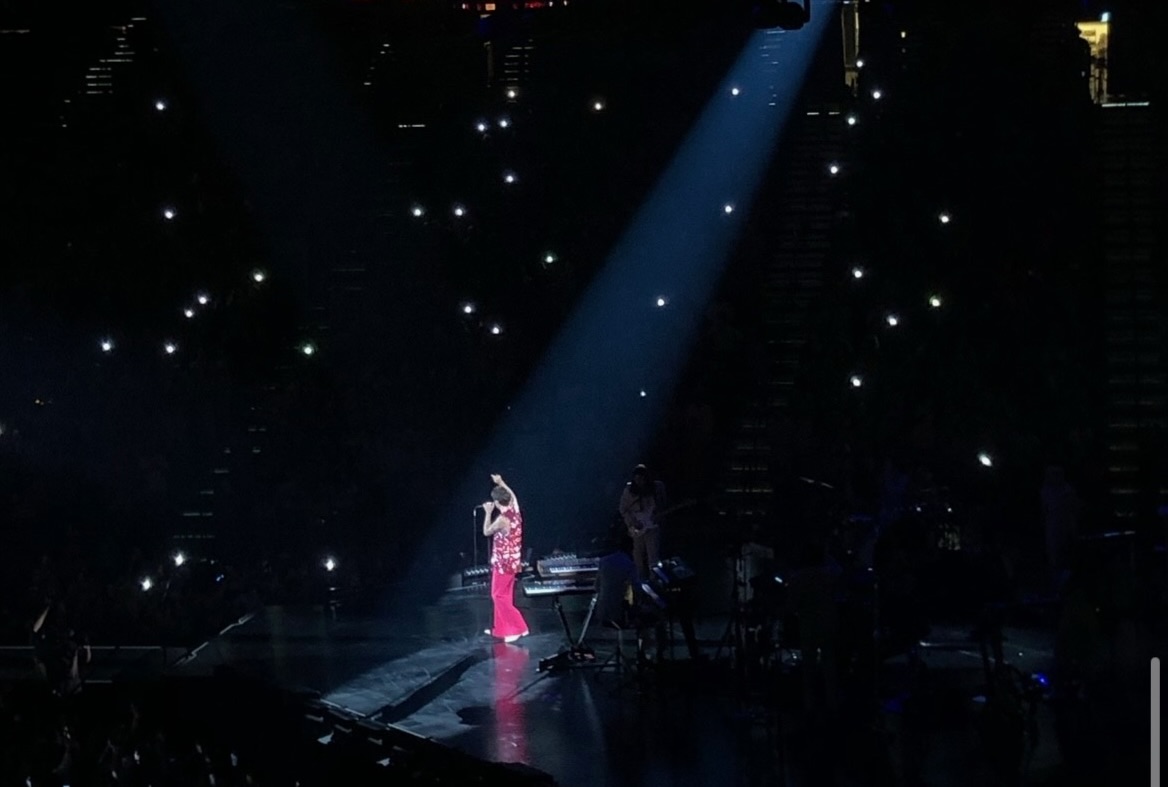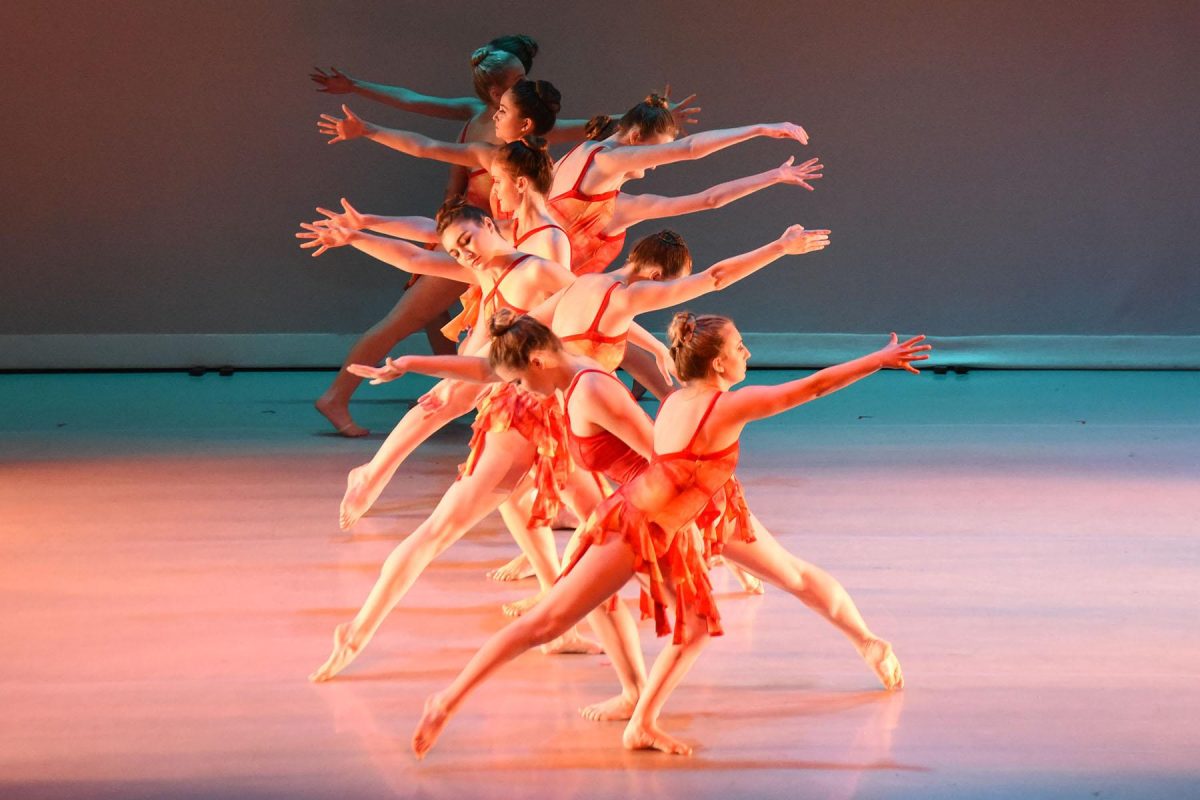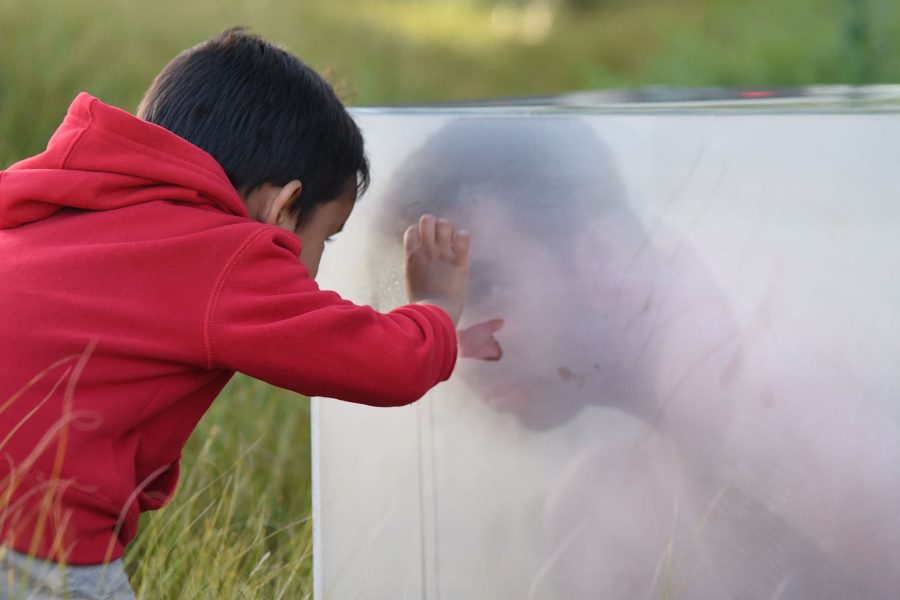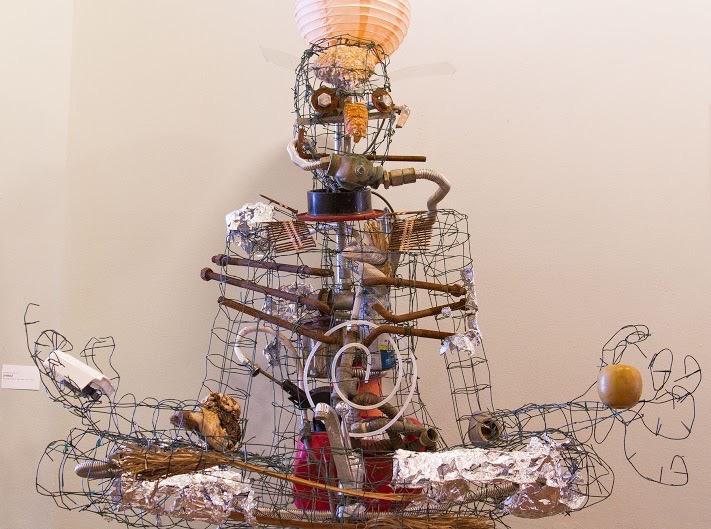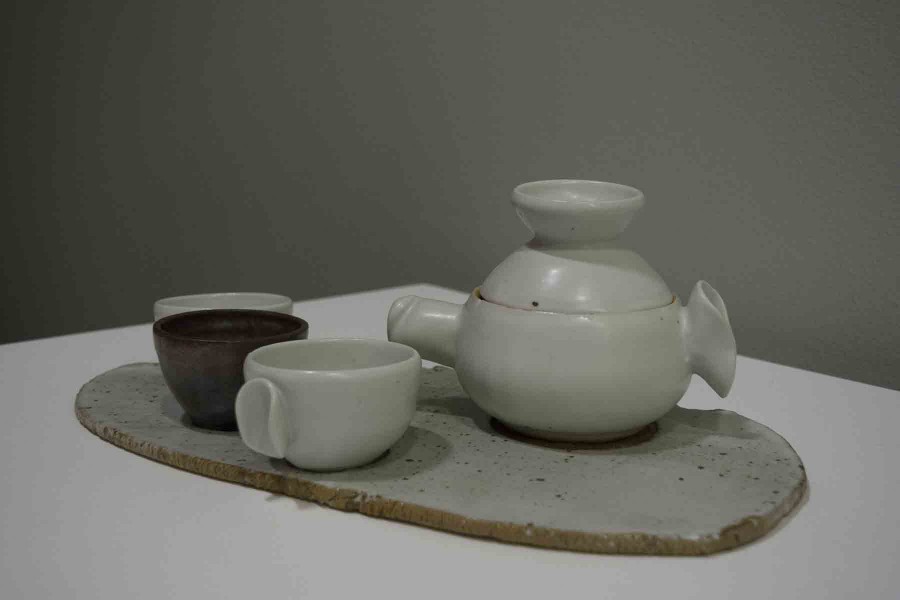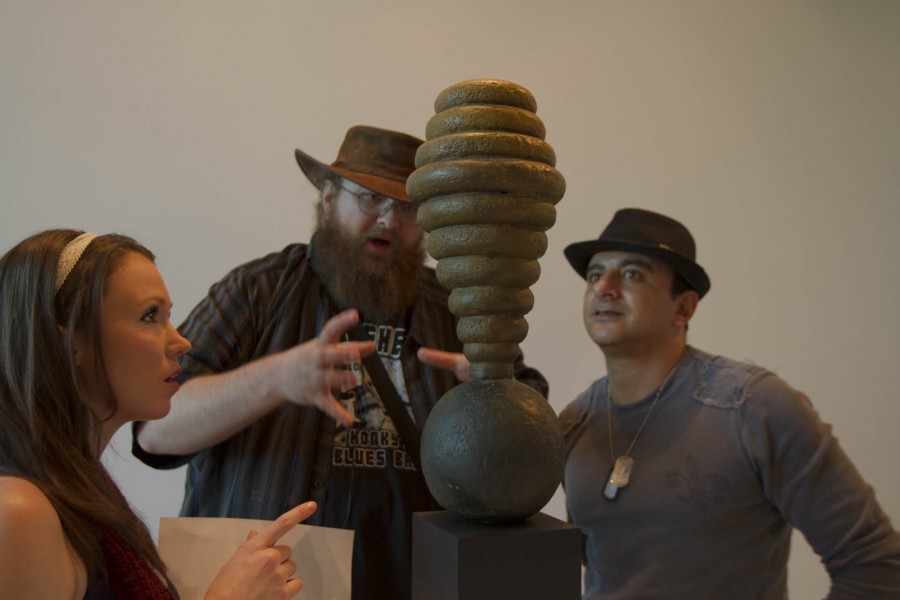Collaborative multimedia artists, Tim Berg and Rebekah Myers, gave a lecture Wednesday night at City College, shortly after their exhibit, “Honest to Goodness,” debuted in the Atkinson Gallery.
The lecture, “Glimpses: Procedure and Practice,” invited viewers into the experimental world of Berg and Myers.
“One of the things I learned is that there are three competing theories of humor,” Berg said.
Berg began with some philosophy, depicting theories of humor to explain his artistic visions.
First, he explained the superiority theory, which views humor as mockery. Then, the relief theory, which suggests humor is a release of excess energy; a concept introduced by Sigmund Freud. The third form of humor—which Berg and Myers payed special attention to—is known as the incongruity theory.
“We laugh when two things that are normally kept separate are unexpectedly forced together,” Berg said. The idea of humor as being incongruous is very fascinating for both the artists to address in their collaborative work.
As noted throughout the lecture, collaboration is more than two people finishing a product together; it is the complete trust given between two separate entities that combine to create something organic and homogenizing—“a natural revolution,” as Berg calls it.
Carlos Padilla, an art student at City College, attended the lecture, where he was most fascinated about working in a combined effort.
“I think the collaboration is very interesting on how people interact and the efficiency of collaboration,” said Padilla.
Another component that is vital to the work created by Berg and Myers is the idea of “mirthlessness,” a concept derived from author and Nobel Prize winner, Samuel Beckett.
In an installation created by the artists, a park bench of true-to-size scale was covered in orange, ceramic squirrels. However, during the time the exhibit was open, these squirrels were sold as souvenirs.
“The idea really explores how nature is something that is systematically transformed into a commodity,” Berg said. “The selling of these squirrels as souvenirs demonstrates how wild animals are often objectified, packaged as something cute, tame and fun and this is something we grew up with.”
A shared vision of aesthetics is constant in the work produced by these artists. Smooth, shiny and highly refined objects are the focus for their ongoing work. Their goal, “to create an iconic form that exists inside your mind.”
The second part of their lecture was titled “Practice,” where Berg and Myers glide through a collection of various works.
In the exhibition, “As Luck Would Have It,” objects resembling ‘lucky charms’ were placed throughout the room. In their lecture they explain the similarities between that show and their newer piece—“better an ounce of luck than a pound of gold,” in the exhibit, “Honest to Goodness.”
In one of the images, wishbones, a rabbit foot and peas in a pod are all elegantly arranged to represent symbols of luck and wealth.
“We like this idea that life is inherently uncertain and so something like luck presents people with an opportunity to conjure up a sense of control over the uncontrollable,” Berg said.
While these intrinsic beliefs are embossed throughout the work created by these artists, the process of collaboration seemed to be the most vital part to achieving their successes.
“You have to listen in a respectful way and have to learn how to remove your ego so you understand that you can yield a stronger result by doing that,” Berg said.


